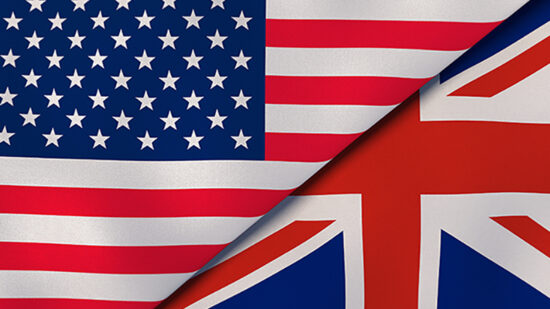When interest rates started rising, the chances of central banks engineering a soft landing appeared vanishingly unlikely. Yet today the UK, eurozone and US economies have falling inflation, rising growth, and confidence is improving. It looks like the ‘Goldilocks’ scenario of ‘not too hot and not too cold’ may become a reality.
The UK and eurozone have emerged from their brief recession at the start of the year quickly, and without any real disruption to the downward path of inflation. In the UK, GDP rose 0.6% in the first three months of the year, while the latest inflation statistics show CPI moving closer to its target of 2%. The eurozone has seen a similar picture on inflation, and GDP growth has lifted to 0.3% over the same period. In the US, inflation has been stickier, but growth has been stronger.
Steven Bell, chief economist at Columbia Threadneedle, points to a range of factors that suggest a stronger outlook. Purchasing managers indices (PMIs) are strengthening, but not enough to derail interest rate cuts. He believes that the ECB will cut first, and more cuts are likely from the UK and US than markets currently expect.
See also: Japan: What’s next?
There is a pattern of improving confidence across the three major economies, but particularly in the UK and eurozone where consumers have been reluctant to spend. Bell says the UK savings ratio has been high, even though incomes are being squeezed. As confidence improves, this savings ratio is likely to drop, with strong consumer spending leading to improving growth. It is a similar situation in the eurozone. The US may be weaker, however, because their saving ratio has been low and may need to normalise.
Core inflation appears to be returning to more normal levels, says Bell: “Europe has got much lower core inflation than the US. The UK has also seen a big improvement.” Sterling had been a big influence on higher inflation, but this has now reversed. Wage growth is important, but he sees signs this is starting to decline, as companies halt hiring plans. In the UK, a hike in the minimum wage has been an important factor, but is likely to start to come out of the figures from here. Overall, his conclusion is that the world economy has “Decent growth, falling inflation and a background that is positive for both bonds and equities.”
Growth disappoints?
There are two main alternative scenarios to this upbeat assessment. The first is that growth disappoints, and the second is that inflation accelerates. Ariel Bezalel, manager of the Jupiter Strategic Bond fund, is in the first camp. He says: “We believe monetary policy operates with long and variable lags, monetary supply growth around the world is non-existent. We believe it’s inevitable that growth will slow and inflation will come down.”
He says that a number of problems are emerging in the US economy that could drag growth lower: “From the top down, everything looks hunky dory, but bottom-up, we are beginning to see a number of problems. Commercial real estate delinquencies, for example, are starting to pick up. There is anecdotal evidence that the services boom is starting to cool down. Restaurant sales and hotel occupancy are now starting to come off the boil: There are also a lot of leading indicators that the labour market is starting to cool. Consumption – 70% of GDP – has seen its best days.”
See also: Premier Miton’s Rayner: Are defensive funds truly living up to their billing?
In Europe, growth is weak. He believes China is gripped by deflation. He says the labour market in the US may be about to turn with quit rates and vacancies show some weakness. He also points to a surge in credit card spending in the US, as the pandemic savings have run out. He believes inflation will drop significantly in the coming months.
Inflation accelerates?
Alec Cutler, manager of the Orbis Global Balanced fund, is of the second view, believing inflation will be structurally higher from here. His only fixed income exposure is to TIPS, which currently have a 2.5% real yield: “We think inflation is more likely to be 4% on average over the next 10 years and could be volatile and spiky.
“Our biggest macro thought is that, while we don’t know what inflation is going to be over six months to a year – the experts in the ivory towers aren’t that good at it either – if you look at long-term drivers, the last 40 years have been extraordinary from an inflation standpoint.” He attributes this to the action taken by governments to rein in union power, plus the peace dividend from the end of the cold war that allowed defence spending to remain low.
This is changing. Cutler adds: “Labour power is coming back – the result of an unemployment rate of 2%. AI is not going to fix it.” He says defence spending is likely to rise as conflicts escalate around the globe. Investors also need to consider the impact of the energy transition, which could prove inflationary, and the reversing of the long-term trend for outsourcing.
He says inflation might be 2% with no exogenous impulses, but once economists add in renewed labour power, electrification, outsourcing and defence, it is possible to get to around 4% long-term inflation. Importantly, he doesn’t believe interest rates will rise to tackle it: “Because you will kill growth and politicians can’t get elected on no growth”. Politician may subtly manipulate the targets, but the reality will be the same.
There are a range of plausible scenarios for the US, UK and European economies, but increasingly, a Goldilocks outcome looks to be the most likely. This would present a benign backdrop for financial markets in the months ahead.
This article was written for our sister title, Portfolio Adviser








